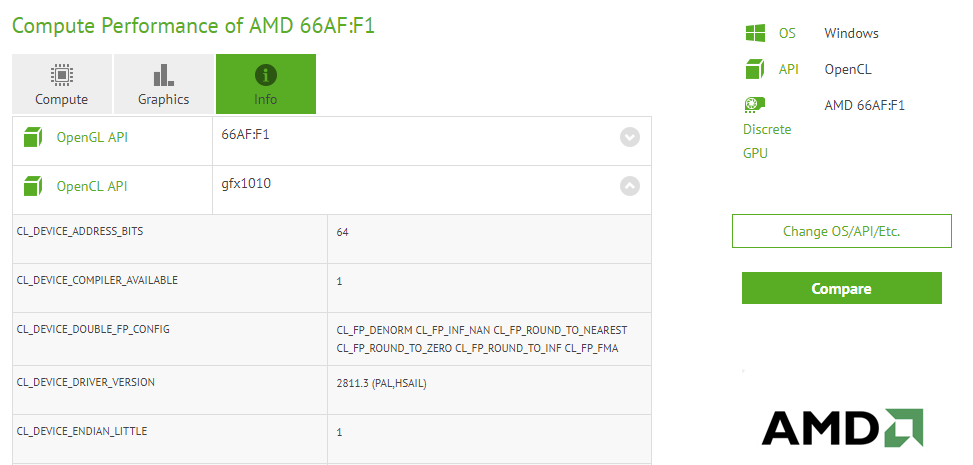Mysterious AMD GPU Benchmark Submission Appears to Be Vega, Not Navi
Graphics enthusiasts are salivating for news around AMD's pending Navi graphics cards, and new
test results from a mysterious AMD GPU listed in the CompuBench database have spurred a new round of speculation. Several media outlets have reported that the GPU is an AMD Navi engineering sample, but after closer inspection, it appears this sample likely isn't of the Navi variety.
The new graphics card has poor compute results compared to Vega 64 and Vega 56, but its graphics performance isn't too far behind the Vega 64. It even beats the Vega 56 in some tests. As Navi is expected to be a low-end or mid-range GPU, on the surface, this seems like a good sign the GPU is indeed Navi.
Eagle-eyed Redditors noticed that the Vega 56 fell far behind both the alleged Navi GPU and Vega 64 in CompuBench's ocean surface simulation benchmark. This ocean simulation benchmark, for example, is very memory bandwidth heavy; Vega 56 only has about 85 percent of the bandwidth of Vega 64, and not even half that of the Radeon VII. The alleged Navi GPU's performance may come down to memory bandwidth and not graphical prowess, which is the first indication that this may not be a Navi GPU at all, but a Vega 20 GPU instead.
The "66AF" GPU, thought to have been Navi, is actually registered under Linux AMD GPU drivers as "Vega 20," making the Navi conclusion even more suspect.
Also, comparing this 66AF:F1 GPU to Radeon VII on CompuBench, nearly everything in the OpenGL information is identical. A notable difference is that Radeon VII has an additional tag under "GL_EXTENSIONS" called "GL_AMD_gpu_shader_half_float2," which may be the tag that specifies Radeon VII's reduced floating point performance compared to other Vega 20 GPUs, like the Radeon Instinct MI60.
While it is hard to tell what exactly this GPU is, if Linux's driver IDs can be trusted, it doesn't appear to be Navi. Even if the GPU is from the Navi lineup, it's hard to glean useful performance data and GPU specifications due to the nature of the CompuBench benchmark. For now, it appears more likely this is just another Vega 20 GPU, perhaps even a new WX Pro series model.
Get Tom's Hardware's best news and in-depth reviews, straight to your inbox.

Matthew Connatser is a freelancing writer for Tom's Hardware US. He writes articles about CPUs, GPUs, SSDs, and computers in general.
